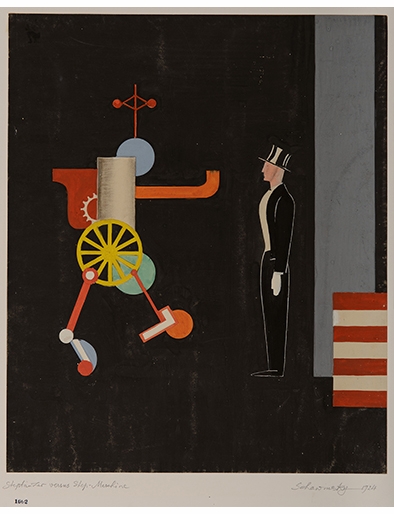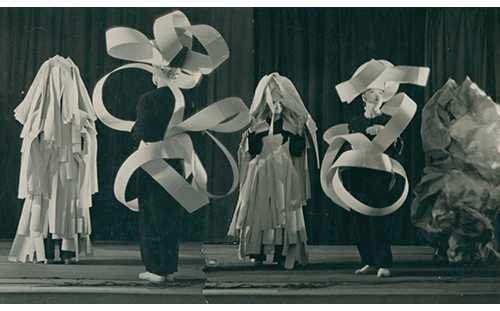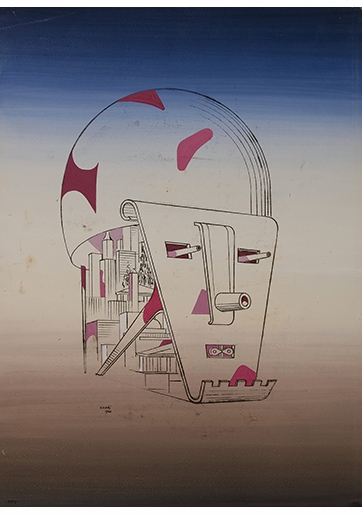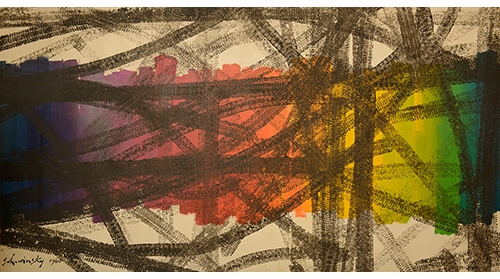| RECENT POSTS DATE 11/1/2024 DATE 10/27/2024 DATE 10/26/2024 DATE 10/24/2024 DATE 10/21/2024 DATE 10/20/2024 DATE 10/17/2024 DATE 10/16/2024 DATE 10/15/2024 DATE 10/14/2024 DATE 10/10/2024 DATE 10/8/2024 DATE 10/6/2024
| | | KOLLEEN KU | DATE 8/23/2015Born in Switzerland in 1904, Xanti Schawinsky was a prominent proponent of theater at the Bauhaus, a leading teacher at Black Mountain College and a prolific member of the 20th century avant-garde—yet his work came perilously close to vanishing after his death in 1979. Because of a legal dispute, Schawinsky's work was barred from public view for three decades—until his son, Daniel Schawinsky, regained control of his estate in 2012. Fortunately for us, Schawinsky has since been the subject of a comprehensive retrospective at the Migros Museum für Gegenwartskunst in Zürich. The accompanying monograph, published by JRP|Ringier, features new scholarship on Schawinsky's pioneering artwork, his tumultuous life as a Swiss Jew and émigré during WWII and his lasting influence on the Happenings and performance art of the 1950s and beyond.
ABOVE: "Stepptänzer versus Steppmaschine," 1924.
Working at the Bauhaus throughout the 1920s, Schawinsky developed concepts for experimental theatre that encouraged collaboration among set designers, costume designers and performers. His preparatory drawings for his stage productions are whimsical and charming, with extravagantly bold colors and abstract-geometric designs. The earlier movements of Futurism and Constructivism influenced Schawinsky's play with color and form, yet he also drew inspiration from Surrealist painting's neo-classical architectural forms and exaggerated spatial depth.
ABOVE: Untitled, 1936.
Outside of the lively optimism of his design work, Schawinsky faced great political tumult and risk as a Jewish artist living in 1930s Nazi Germany. So, in 1936, at the invitation of fellow Bauhaus alumnus Josef Albers, he fled to Black Mountain College in North Carolina—then the apex of experimental art pedagogy in the United States and home to many displaced Europeans.
During his time at Black Mountain, Schawinsky was the only exponent of Bauhaus theatre in the United States. His productions were highly experimental affairs involving elaborate sets and costumes, dynamic spatial arrangements and optical projections. Conceived as "total experiences," these performances veered away from conventional theatre and laid the groundwork for John Cage and Merce Cunningham's experimental Happenings of the 1950s and 60s—also pioneered at Black Mountain College.
ABOVE: Untitled, 1942.
Although best known for his work in performance, Schawinsky's drawings and paintings are equally innovative and powerful. Produced after his move to New York in the 1940s, Schawinsky's drawing series, Faces of War, is variously whimsical, disturbing and fantastical, with human faces depicted as tromp l'oeil constructions of weapons and machines. (This series was also the subject of a recent exhibition with accompanying publication at the Drawing Center in New York.) Schawinsky's process-based paintings are also full of bold vigor, as he crumpled, burned, drove over and even danced upon the canvas to marry the disciplines of painting and performance.
ABOVE: "Transition," 1960.
The book ends on a poignant note with the artist's revival of Sergei Prokofiev's ballet, The Tale of the Stone Flower. Although the production was poorly received, Schawinsky's richly designed stage settings were widely deemed the highlight of the show. Curator Raphael Gygax notes, "Looking through the scant surviving photographic documentation today, we cannot help but think that Schawinsky also saw the commission as an opportunity to look back over his career… No museum dedicated a retrospective to Schawinsky's art in his lifetime, and to his mind, the theatrical stage was always a space for reflection too." Here, Schawinsky's innovative, powerful work is finally given its due.
Schawinsky's work can be seen in Leap Before You Look: Black Mountain College 1933–1957, opening at ICA Boston October 15 and traveling to MFA Houston and the UCLA Hammer Museum through 2016.
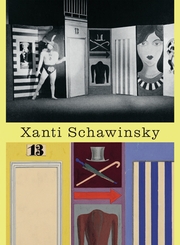 JRP|Ringier
Pbk, 8 x 10.75 in. / 176 pgs / 58 color / 31 b&w. $59.95 free shipping | |
|
